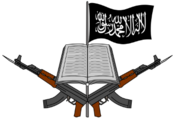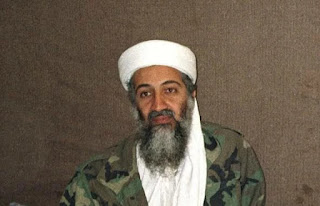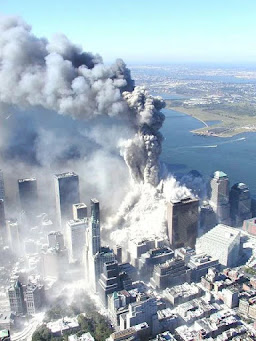Boko Haram Meaning
Boko haram is a Jihadist group of Sunni terrorists based in northern Nigeria. Boko Haram means ‘Western education is forbidden’. It was formed by Mohammed Yusuf.
Mohammed Yusuf hated the West and was very critical of the government, which he saw as corrupt and un-Islamic. He set up a religious complex, including a mosque and an Islamic school in Maiduguri, the capital of Borno state.
Mohammed Yusuf was a charismatic speaker whose followers were a mixed bag, not only some of society's poorest but also upper class and university students, who invited him to speak on campus.
| Founder | Mohammed Yusuf(2002) |
| Leader | Abubakar Shekau Abu Musab al-Barnawi |
| Logo |  |
| Meaning | Western education is forbidden |
| Ideology | Salafism |
Background
On the 18th of May a young woman who had been kidnapped with 275 others, from Chibok school in Borno state in Nigeria, was found. They had been taken by Boko Haram, an Islamic group two years previously. of the 276 taken it is believed that 218 remain the group's captives. On the 20th of May, the Nigerian army rescued 97 women and children who had been abducted by the group, it was initially thought that one of the group was a girl who had been kidnapped from Chibok school. It later emerged that the girl had attended Chibok school, but had been abducted in a separate incident and was not part of the 276. When they were taken, on the 14th of April 2014, the story was reported globally and remained in the news for some time.
Now that the latest Chibok schoolgirl had been freed the media attention has returned – but more important than that, her liberation may be a sign that Boko Haram is critically weak. Boko Haram’s official name was Jamā'atuAhli is-Sunnah lid-Da'wati wal-Jihād meaning "People Committed to the Prophet's Teachings for Propagation and Jihad”, until around the 7th of March 2015 when they declared their allegiance to ISIS or Islamic State and changed their name to Wilāyat Gharb Ifrīqīyyahor Islamic State West Africa Province.
The group was also sometimes referred to as Yusifiyya, after its founder, Mohammed Yusuf, until his death in July 2009. Here I’ll refer to the group like Boko Haram, the translation of which is usually given as "Western education is forbidden” or border variations of that phrase, such as “Western influence is sin”.
Foundation
Foundation
Boko Haram History
The group was founded in 2002 in Maiduguri, the capital of the northeastern state of Borno, as a strict Sunni sect. following Wahhabist ideas - a movement with a fundamentalist interpretation of Islamic teachings, emanating from Saudi Arabia, that influenced Osama Bin Laden, and is similar to, in ways that are often debated, Salafism, which appears to largely be the movement ISIS affiliate themselves with. Yusuf and his followers established themselves Kanamma, a town in the north-eastern state of Yobe, and although they set up a mosque in Maiduguri, it seems the group largely withdrew from much of society, and although over the years they became both radicalized and militarized, initially their activities appear to have been peaceful.
They initially established small camps and schools in the remoter regions of Borno and Yobe. However what arguably made them stand out from other radical groups was their reaction to the police, which Boko Haram actively worked against from 2004. There is also speculation that in the mid-2000s the group may have been partially funded by politicians and people within the Nigerian government with the objective of intimidating and disrupting opponents and rivals. Dr. Stephen Davis, a former canon at Coventry Cathedral who has spent several years negotiating with Boko Haram, has named several officials who he accuses of directly funding the group in the past, although his allegations have never been proven. What is clear is that Boko Haram succeeded in attracting many, especially young people, in the poorer North, and this often is attributed to disaffection with a state plagued by problems with corruption and inter-religion violence, with bloody riots the norm: on the 4th of May 2004 an estimated 600 people, mainly Muslim Fulanis were killed by Christian Taroks in the town of Yelwa.
A week or so later in the town of Kano, 500-600, mostly Christians, were killed in two days of violence, Christian community leaders say. At least 157 people died in a week of rioting by Muslim and Christian groups in Maiduguri, in February 2006. At least 700 people in Jos were killed in violence between Muslims and Christian caused by a disputed local government election in November 2008. Boko Haram became increasingly radical and isolated from the mainstream Muslim community, and it is reported that more than 50 Muslim leaders repeatedly called on the Nigerian police and state security urging them to take action against Boko Haram because of their increasing militarisation. Sometimes at the end of July 2009 members of Boko Haram were stopped by police in the city of Maiduguri as they were on the way to a cemetery to bury one of their numbers. The police demanded that group members follow a new law which made helmets compulsory for motorbike riders, and a confrontation followed in which several of the group were shot.
On the 26th of July, the group attacked a police station in Bauchi, and a gun battle ensued, resulting in 32 of Boko Haram’s number killed and a Nigerian soldier killed – security forces then began to raid neighborhoods associated with the group, although the President at the time, Umaru Yar’Adua, claimed it was the Nigerian military who struck first. Whoever was the first to act, around a thousand people died during what is now called the Boko Haram uprising, and on the 30th of JulyYusuf was killed in custody. The police justified his death by saying he was attempting to escape, but witnesses have since stated that he was executed. Yusuf’s death is perhaps the formative moment for Boko Haram as they are known today. Yusuf was succeeded by his second-in-command, Abubaker Shekau, who arguably took the group in a more extreme direction and was perhaps able to use Yusuf’s apparent murder to galvanize support. Boko Haram spent much of 2010 recovering, but in September they broke 105 of their members out of prison in Bauchi along with over 600others prisoners and began a campaign of insurgency across the north of Nigeria, carrying out assaults and bombings.
In July 2009, Boko Haram staged a failed uprising against the Nigerian government. Eight hundred people were killed, and many of their members arrested. Authorities thought they’d successfully crushed the group when Mohammed Yusuf was killed in police custody. But that July uprising marked the beginning of a ten-year-long battle that continues to this day. Just a year after the uprising, one of Yusuf’s lieutenants, Abubakar Shekau, announced he was now the new leader of Boko Haram. The re-emergence of Boko Haram under Shekau’sleadership marked one of the first times when authorities claimed to have defeated BokoHaram, only for the group to resurface. It’s a pattern that would be repeated time and again over the next decade.
In August 2011, Boko Haram made international headlines when it sent a car bomb into the United Nations compound in Abuja. Twenty-three people were killed, and more than seventy-five injured. The next few years would be some of the group’s deadliest. Between 2013 and 2015, Boko Haram killed more than eleven thousand people. It was impossible to count the number of dead bodies, there were so many. Women, men, and children were killed. During that period, the group seized more and more territory - and by 2015 was in control of much of Nigeria’s Borno state. It also spread its attacks beyond Nigeria’sborders, to neighboring Niger, Chad, and Cameroon. As people fled the terror, the UN estimates that over 2.2 million people were displaced. But Boko Haram’s most notorious attacks came when they targeted schoolgirls.
One night in April 2014, students of the Girls’Secondary School of the northern town of Chibok were sleeping in their dormitories. But armed members of Boko Haram stormed the boarding school. They bundled 276 terrified schoolgirls together and took them away. The abduction led to global outrage. Prominent global figures asked for more to be done to free the girls. But although a number of them have been released in the last five years, more than a hundred of the students are still missing. The Chibok incident showed Boko Haram that kidnappings could bring them publicity. Four years after Chibok, they abducted 110 schoolgirls from the town of Dapchi. Most were released a month later. But one of them, a Christian student called Leah Sharibu remains in captivity. Her peers say she refused to give up her faith. Since 2013, more than a thousand children have been abducted by the terror group. The Nigerian military has been criticized for their failure to free those kidnapped by Boko Haram. Low morale and corruption have left the army floundering. But Boko Haram’s shifting strategy, including the use of female suicide bombers, has made them hard to pin down. In recent years Boko Haram has fractured and split, forging new alliances, and developing new tactics.
In 2015 Boko Haram lost its self-proclaimed capital, Gwoza, to Nigerian troops. Over time, the government has taken back territory, forcing the group towards the hilly area east of Gwoza, as well as Lake Chad and the SambisaForest. Whilst losing territory, Abubakar Shekau looked for new international allies. He pledged allegiance to the so-called Islamic State. But IS had other ideas. A year later, it announced that the new leader of what was now known as the Islamic State West Africa Province was Abu Musab al-Barnarwi. Remember this guy? Mohammed Yusuf, the founder of Boko Haram? Well, Al Barnawi is believed to be his son. Although he keeps a low profile - there are no verified images of him. So Boko Haram was now split. Abubakar Shekau remained in control of another faction, now known as Jama’tu Ahlis Sunna Lidda’awati Wal-Jihad. Or JAS to you and me.
The Islamic State West Africa Province, also known as ISWAP, has developed new tactics - focusing on winning the hearts and minds of the communities in the territory it controls. ISWAP's tactic now is actually, is a combination of, not just warfare, but it's also a combination of a state-building project, so ISWAP is actually engaging in that state-building project, having their own judicial system where they establish court judgments. Also monitoring economic activities, especially fish farming, cattle rearing, and farming activity in the region. Now all of these activities were not the activities we saw from Boko Haram at the early and the nascent stage. As IS’s caliphate is lost in the MiddleEast, ISWAP is attempting to establish one in West Africa. If it is successful, this insurgency could be around in another decade.
On June the 16th 2011 the group was responsible for Nigeria’s first suicide bombing, which targeted a United Nations Compound in Abuja. Along with gorilla style assaults and bombings, the group has since 2014 increasingly used women and children who they have captured detonate suicide bombs, with at least 105 used in suicide attacks since June 2014. On the night of the 14th of April 2014, Boko Haram militants kidnapped 279 female students from Chibok secondary school, 218 of which are still thought to be held captive. The Sunday Times reports an unnamed Nigerian military commander saying that the international attention given to the girls taken from Chibok means they may now be worth more to the group’s leadership than other captives and quotes him as saying “We think they are keeping them with their main leadership. The day we get to the Chibok girls will spell the end of Boko Haram, but I fear they will kill all the girls in mass suicide bombings in the process.” In the same year, Boko Haram abducted a total of around 2000 women and girls and killed around 10 000 people. During 2014, they gained large amounts of territory in and around the state of Borno, estimated to be around 50,000 square kilometers (20,000 sq mi).
At the end of January 2015, a coalition of WestAfrican nations began a major military offensive against Boko Haram. Mohammed Musa Mshelia: We've mounted on the heat against Boko Haram. Before the arrival of these weapons, it was a defensive operation, but now we are on the offensive. On or around the 7th of March, the group announced its affiliation with ISIS. But such affiliation may have little practical meaning. Physical support would probably be too difficult to worth attempting, and perhaps the pledge of allegiance is important in that it shows a shift across many different regions, where groups that once identified with Al-Qaeda are now identifying with ISIS. Interviewer: Can you really see Boko Haram and ISIS working together or is this just a partnership in a name? Chris Dickey: Well it's an extension of the ISIS franchise, I mean this is part of the ISIS strategy; to draw in groups from all over the world. I think now 31 groups of various sizes from the Philippines to North Africa to now Boko Haram in Nigeria have pledged allegiance to the Caliph Ibrahim - Abu Bakr Al-Baghdadi, the head of ISIS. So all of that is good publicity, but co-ordinating those groups - that's another question.
On March 27th the Nigerian Army took Gowzafrom Boko Haram, a town believed to have been used by the group as their headquarters. At the end of April 2015, the army began pushing into Sambisa forest, considered by many to be Boko Haram’s last stronghold. During this time the army began to free hundreds of women and children who had been abducted, but their progress slowed, and later in the year, Boko Haram retook towns including Marte. On the 24th December 2015, the President of Nigeria Muhammadu Buhari, claimed that Boko Haram was "technically defeated." Despite that US General David Rodriguez, Commander of United States Africa Command said on the 8th of March that Boko Haram still holds significant territory and Boko Haram has continued its actions and engaged the Nigerian army in small battles, notably at Kareto on the 18th of April 2016.
On the 14th of May Cameroon's government announced that five Boko Haram leaders had been arrested, apparently fleeing Nigeria. Many militants have been captured, and their ability to fight pitched battles appears to have been diminished, yet Boko Haram still controls an inexact but no doubt a significant amount of ground. The danger, as their conventional military abilities dwindle, is that they will up the ante in terms of suicide bombings and attacks on civilians. Although much of the world seems to anxiously await news of the Chibok girls, it is worth noting that the BBC reports that the Nigerian Army freed 11 and half thousand captives of Boko Haram between February and April this year. On the 21st of May, The Times reported that senior Boko Haram militants claim that they are prepared to negotiate a surrender and release their hostages. An unknown number remain their captives. Perhaps it's only a matter of time until the organization is defeated. So, until next time, goodbye, and try to remain calm.
Boko Haram movie
Watch Stolen Daughters: Kidnapped By Boko Haram movie on 276 Nigerian schoolgirls kidnapped from a school in Chibok,












